
Fundamentals
The vitality of our strands, particularly for those with textured hair, is profoundly influenced by the silent, yet ceaseless work of proteins. At its simplest, the Protein Hair Benefits refer to the manifold ways these organic compounds contribute to the strength, resilience, and overall well-being of hair. Consider hair as a delicate, yet durable, architectural marvel.
Its primary building block, a fibrous protein known as Keratin, forms the very scaffolding of each strand. This natural substance is responsible for the hair’s inherent structure, its ability to withstand daily stressors, and its distinctive shape, whether it presents as gentle waves, spirited curls, or intricate coils.
For individuals tending to textured hair, the comprehension of protein’s role moves beyond mere scientific interest; it becomes a cornerstone of thoughtful care. The unique helical and sometimes flattened cross-sectional shape of textured hair, particularly in Black and mixed hair types, means that sebum, the scalp’s natural oil, does not travel down the hair shaft with the same ease as it might on straighter strands. This characteristic can leave textured hair more prone to dryness and, subsequently, a heightened susceptibility to breakage. Protein acts as a fundamental fortifier, helping to mend and prevent the minuscule fractures that can occur along the hair shaft, preserving its length and overall health.
The fundamental significance of protein in hair care lies in its capacity to restore and maintain the hair’s structural integrity. When hair is exposed to environmental aggressors, styling practices, or chemical treatments, the protein bonds within the keratin structure can become compromised. Recognizing the signs of this protein depletion – such as excessive shedding, a gummy texture when wet, or a persistent lack of elasticity – allows for an informed approach to reintroducing these vital elements. It is a gentle act of replenishment, providing the hair with the very material it requires to remain vibrant and strong.
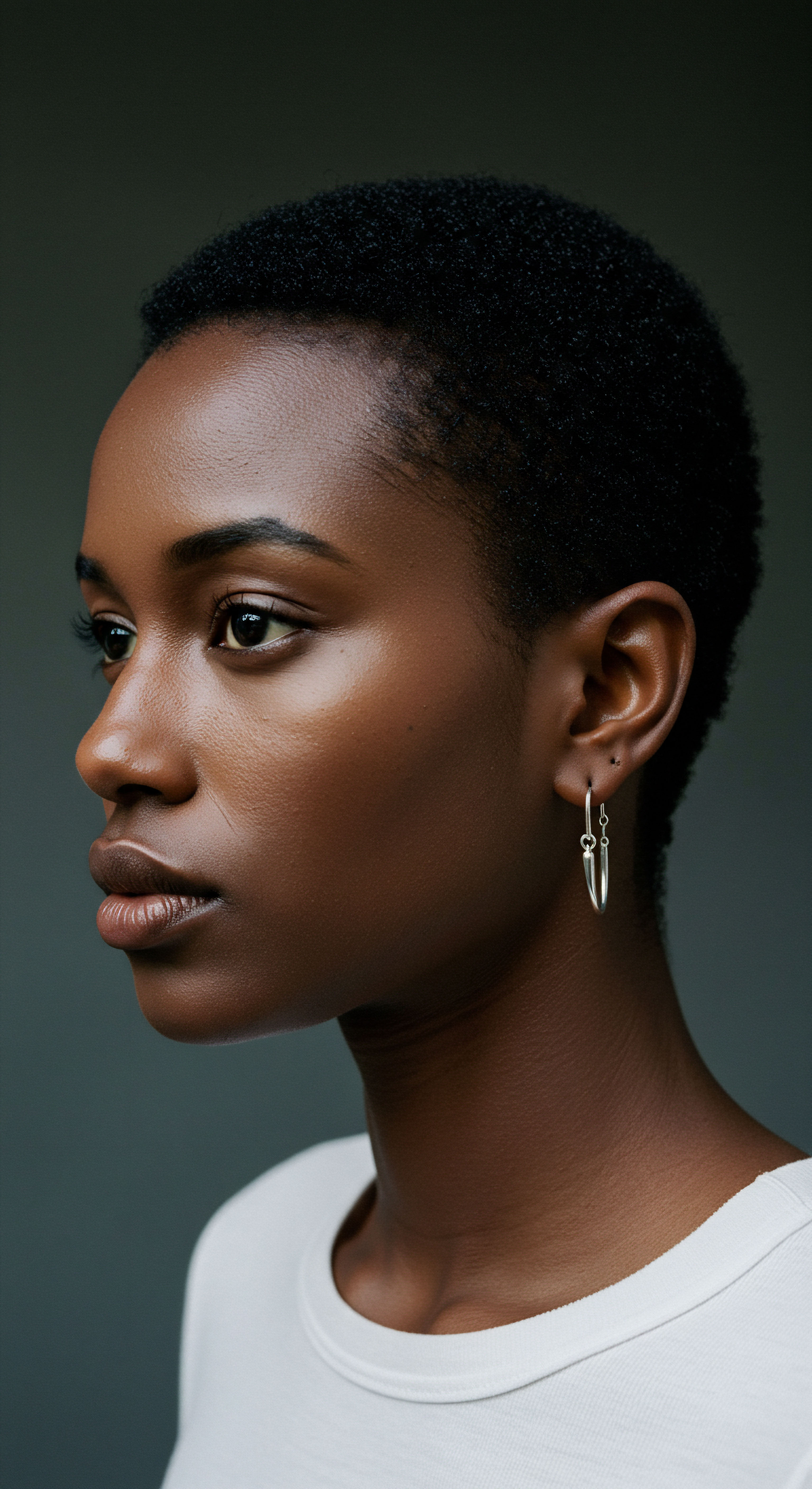
The Hair’s Intrinsic Architecture
Each hair strand, though seemingly simple, possesses a complex internal arrangement that speaks to its strength and flexibility. The outermost layer, the Cuticle, comprises overlapping, scale-like cells that protect the inner core. Beneath this protective shield lies the Cortex, the thickest part of the hair, where keratin proteins are densely packed.
These keratin proteins are composed of hundreds of amino acids, linked together by peptide bonds, forming long polypeptide chains. The way these chains interact and are cross-linked, particularly through disulfide bonds, dictates the hair’s natural curl pattern and its inherent strength.
Hair’s strength and unique texture stem from its keratin protein foundation, a testament to nature’s intricate design.
Understanding this basic composition provides the groundwork for appreciating how external applications of protein can interact with and support the hair’s natural makeup. When protein treatments are applied, they are designed to temporarily attach to the hair follicle, filling in any compromised areas along the cuticle, and thereby hardening this outer layer. This process helps to smooth the hair’s surface, reduce friction, and reinforce its natural defenses against damage.

Early Indications of Protein Needs for Textured Hair
For those embarking on a journey of deeper understanding for their textured hair, recognizing the early signals that protein might be beneficial is a helpful step. These signals are often subtle whispers from the hair itself, communicating a need for structural support.
- Excessive Stretch ❉ When wet, healthy hair possesses a degree of elasticity, stretching a bit before returning to its original state. If strands stretch considerably without recoiling, or feel overly limp, it may indicate a protein deficit.
- Unusual Softness ❉ While softness is often desired, an unusual, almost mushy softness, particularly when wet, can be a sign that the hair’s protein balance is askew, leaving it vulnerable.
- Increased Breakage ❉ Observing more hair strands snapping during detangling or styling, rather than simply shedding from the root, often points to a weakened hair structure in need of reinforcement.
These initial observations invite a gentle inquiry into the hair’s current condition, guiding one towards solutions that honor its natural integrity. The application of protein, even in its most fundamental form, serves to bolster the hair’s natural defenses, allowing it to better navigate the demands of daily life and styling.

Intermediate
Stepping beyond the foundational understanding, the intermediate meaning of Protein Hair Benefits delves into the nuanced application and contextual significance of these fortifying agents, particularly within the diverse world of textured hair. This layer of comprehension considers how protein treatments move from a simple concept to a purposeful practice, integrated into a holistic care regimen. The practical application of protein for textured hair is not a one-size-fits-all solution; rather, it is an art of careful observation and gentle response, recognizing the unique requirements of each curl, coil, or wave pattern.
At this level, the discussion of protein benefits shifts towards understanding the types of proteins used in hair products and their specific roles. Hydrolyzed proteins, for instance, are a frequent inclusion in hair formulations. These proteins have been broken down into smaller molecules, allowing them to penetrate the hair shaft more effectively than larger, intact protein structures.
This molecular reduction is critical for delivering targeted repair and reinforcement to compromised areas of the hair. Common examples include Hydrolyzed Wheat Protein, Hydrolyzed Rice Protein, and Hydrolyzed Keratin, each offering distinct advantages in fortifying the hair’s internal and external structures.
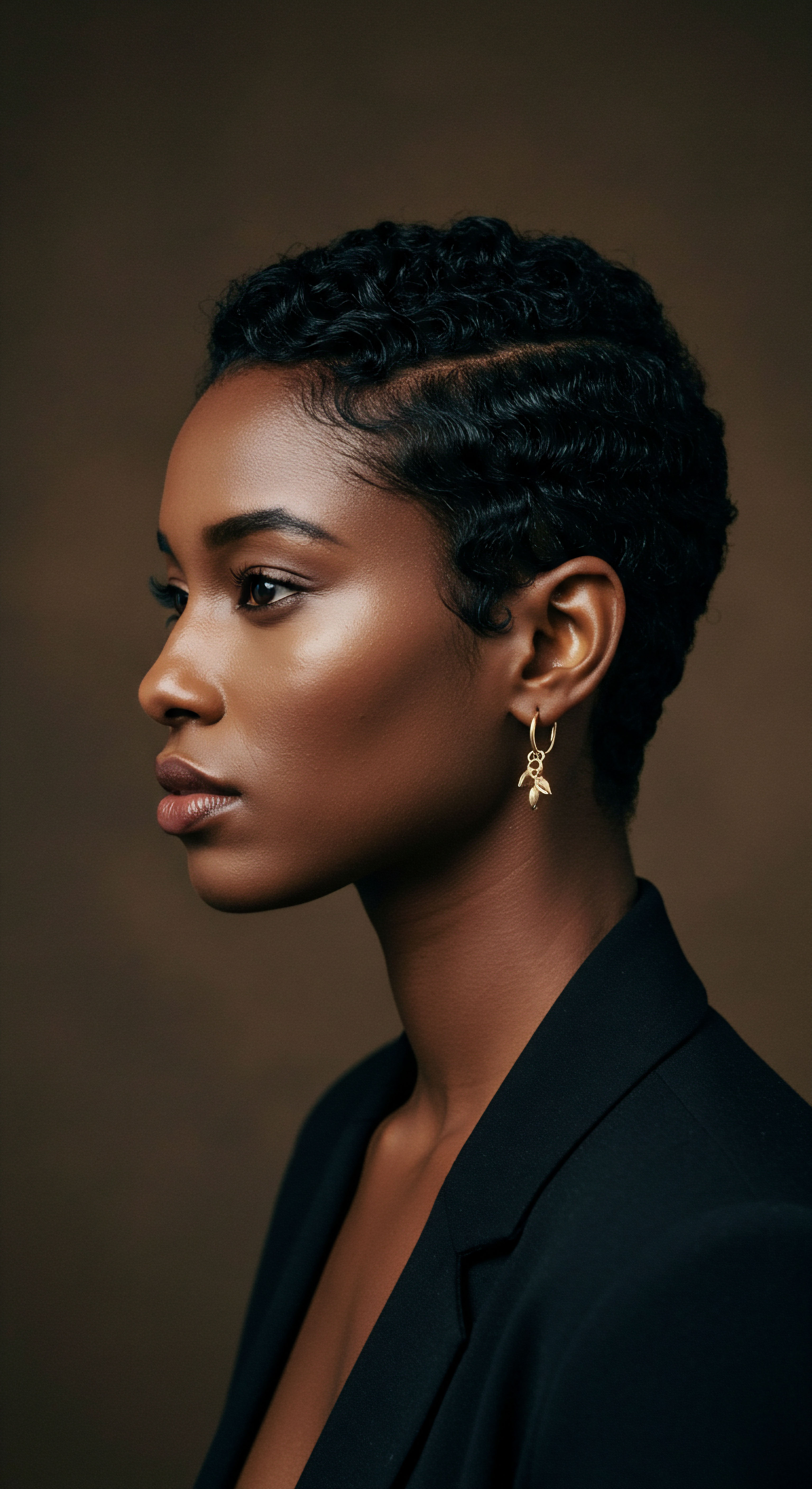
Practical Manifestations of Protein in Textured Hair Care
The manifestation of protein benefits in daily and weekly hair care rituals for textured hair is varied and adaptable. Protein can be incorporated through a spectrum of products, from light leave-in conditioners to intensive deep treatments. The key lies in selecting the appropriate concentration and frequency based on the hair’s current state and its exposure to potential stressors. For hair that undergoes regular heat styling, chemical processes like coloring or relaxing, or frequent manipulation, protein inclusion becomes a more frequent consideration.
Consider the role of protein in mitigating damage from common practices. For instance, when hair is wet, its internal hydrogen bonds are more susceptible to disruption, making it weaker and more prone to damage during detangling. Protein treatments, when applied thoughtfully, can provide a temporary scaffolding, reducing this vulnerability.
They assist in strengthening the hair, making it more resilient to the mechanical stresses of combing and styling. This reinforcement translates into reduced breakage and, consequently, improved length retention for textured hair.
Protein treatments provide a vital scaffold for textured hair, reinforcing its structure against the daily demands of styling and environmental exposure.

Common Contexts for Protein Integration
The integration of protein into a textured hair care routine often occurs in specific contexts, addressing particular needs or challenges.
- Post-Chemical Treatment Support ❉ After processes like coloring, relaxing, or perming, the hair’s disulfide bonds are chemically altered, leading to potential weakening. Protein treatments assist in rebuilding and fortifying these compromised structures, helping to restore some of the hair’s lost integrity.
- Heat Styling Protection ❉ Frequent application of heat, whether from blow dryers or flat irons, can degrade the hair’s natural protein. Incorporating protein-rich products can offer a protective layer, reducing the extent of heat-induced damage and maintaining the hair’s resilience.
- Environmental Stress Response ❉ Exposure to harsh environmental elements, such as strong sun, chlorinated water, or dry climates, can deplete hair proteins. Regular protein treatments can help replenish these losses, preserving the hair’s strength and moisture balance.
A common misconception surrounds protein and moisture. While protein fortifies the hair, it requires a harmonious balance with moisture to function optimally. An excess of protein without adequate hydration can lead to stiffness and a brittle feel, which is often misinterpreted as “protein overload.” Conversely, too much moisture without sufficient protein can leave hair limp and overly elastic. The skilled application of protein in textured hair care involves a continuous dance between these two elements, seeking equilibrium for vibrant, healthy strands.
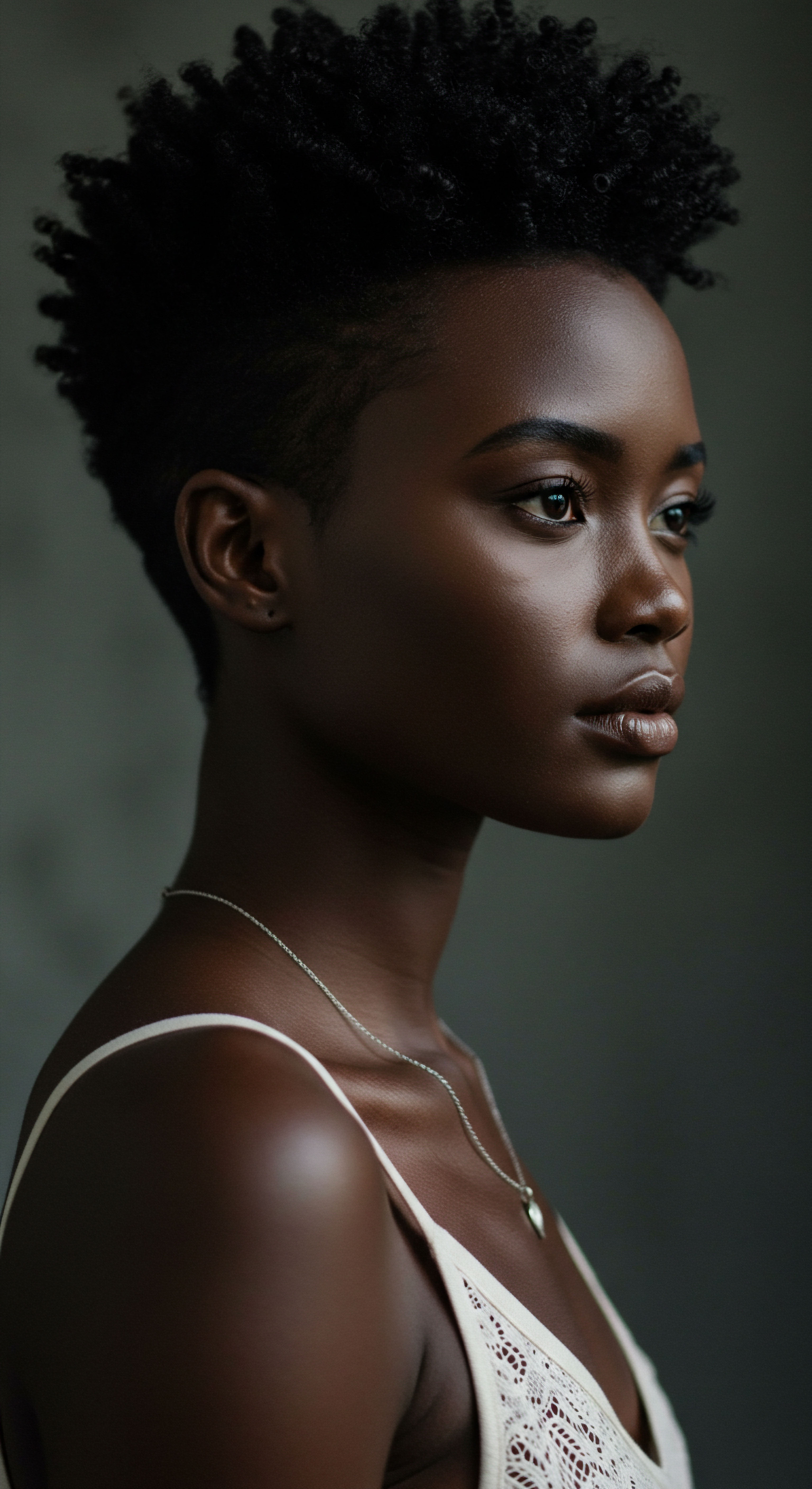
Navigating Product Choices and Frequency
The intermediate understanding also encompasses the discernment of product labels and the strategic planning of treatment frequency. Many products formulated for textured hair now clearly indicate their protein content. Reading ingredient lists for terms like “hydrolyzed,” “amino acids,” or specific protein names like “keratin” or “collagen” helps in making informed selections.
The frequency of protein treatments is highly individual, often ranging from bi-weekly for highly damaged hair to monthly or even less often for hair that is generally healthy and well-maintained. Listening to the hair’s feedback—its feel, its elasticity, its propensity for breakage—serves as the most reliable guide.
The gentle wisdom of Roothea suggests approaching protein treatments not as a rigid prescription, but as a responsive dialogue with your hair, offering support when it signals a need, and allowing it space to flourish in its natural strength. This nuanced approach honors the hair’s unique story and its capacity for beauty when met with thoughtful, informed care.

Advanced
The advanced comprehension of Protein Hair Benefits transcends a superficial understanding, delving into the intricate biomechanical, historical, and socio-cultural dimensions of protein’s interaction with textured hair, particularly within Black and mixed-race hair heritage. This sophisticated explication recognizes protein not merely as a cosmetic ingredient, but as a critical determinant of hair’s structural integrity, a historical point of intervention, and a contemporary subject of nuanced scientific inquiry. The significance here lies in dissecting the complex interplay of biological predisposition, environmental stressors, and cultural practices that shape the hair’s protein needs and responses.

Meaning of Protein Hair Benefits ❉ An Advanced Delineation
From an advanced perspective, the meaning of Protein Hair Benefits refers to the strategic application of exogenous protein molecules, often in hydrolyzed forms, to augment the inherent keratinous structure of the hair shaft, thereby enhancing its tensile strength, elasticity, and overall resilience against mechanical and chemical degradation. This involves a precise understanding of the hair’s unique molecular architecture, where alpha-keratin, a fibrous structural protein, forms the primary matrix, supported by keratin-associated proteins (KAPs). The efficacy of protein treatments is predicated on the ability of these external protein fragments to integrate, even temporarily, with the hair’s internal protein network, specifically targeting areas of cuticle lifting or cortical damage. The elucidation of these benefits necessitates an appreciation for the subtle shifts in hair morphology and biomechanics that occur at a microscopic level, impacting the hair’s macroscopic appearance and behavior.
The unique helical structure and elliptical cross-section of Afro-textured hair follicles contribute to its characteristic curl pattern and, paradoxically, its susceptibility to mechanical stress. Research indicates that African hair possesses a higher density of disulfide bonds compared to European hair, which contributes to its tight curls but also renders it less resistant to mechanical extension and more prone to premature failure and breakage at points of curvature. This inherent structural reality means that protein reinforcement takes on a particular significance for textured hair, acting as a crucial intervention to mitigate damage that arises from both intrinsic characteristics and extrinsic handling.
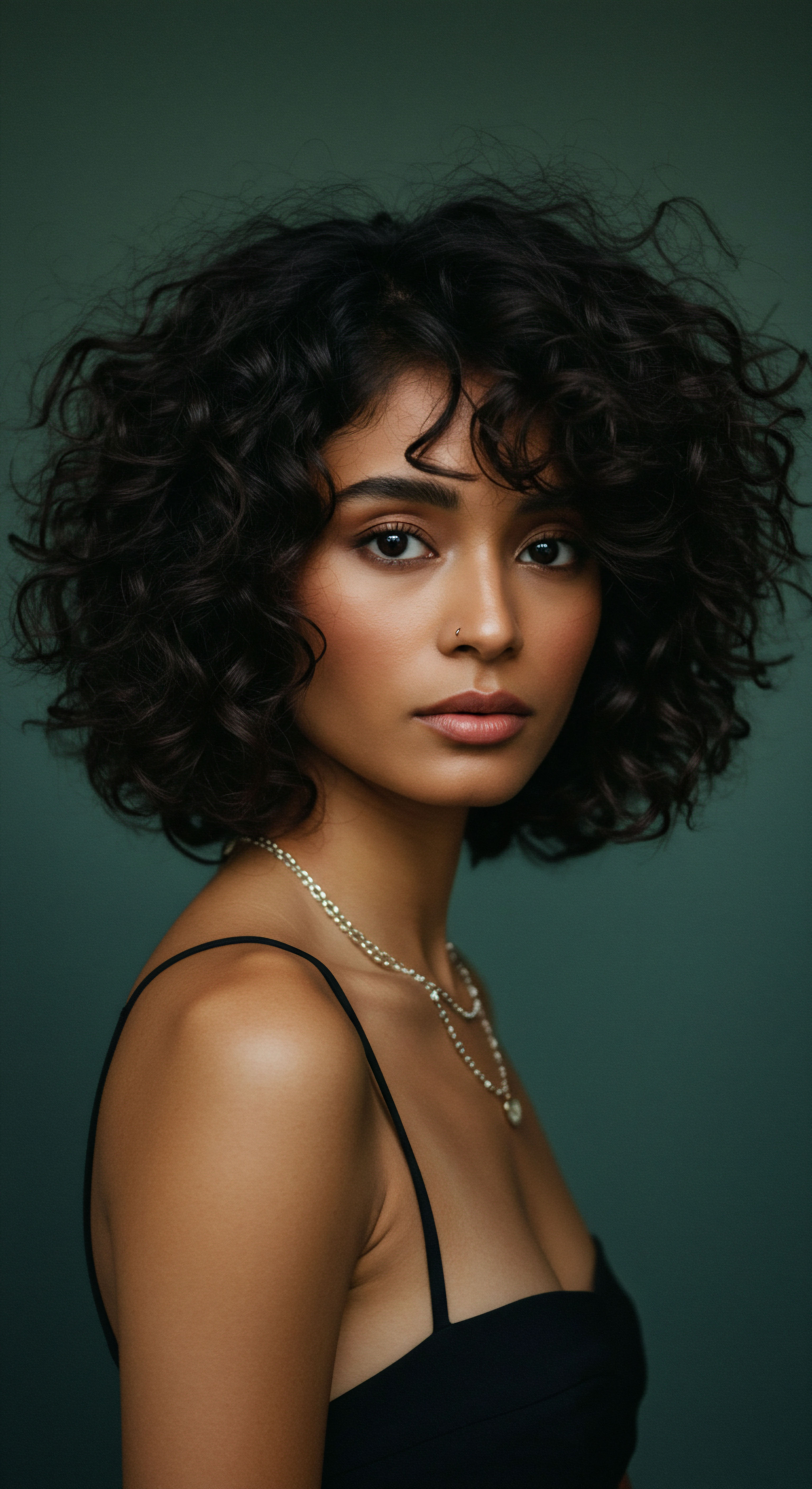
The Intricacies of Protein Interaction and Hair Biomechanics
The scientific underpinnings of protein benefits are rooted in molecular interactions. When hydrolyzed proteins are applied to hair, their smaller molecular weight allows for varying degrees of penetration into the hair shaft, with lower molecular weight proteins potentially reaching the cortex and higher molecular weight proteins primarily adsorbing onto the cuticle surface. This interaction can fill in gaps within the cuticle, reducing porosity and creating a smoother surface that minimizes friction between strands, a common cause of breakage in textured hair.
The restoration of hair’s mechanical properties, such as its Tensile Strength (the force required to break a strand) and Elasticity (its ability to stretch and return to its original shape), is a primary benefit. A study published in the Journal of Cosmetic Science noted that protein treatments significantly improved hair strength and elasticity, reducing breakage by up to 50%. However, the nuances of this interaction are complex.
For instance, while some studies suggest that African-coily hair may have a greater amount of low sulfur-protein compared to high sulfur-protein, contributing to structural differences, other research indicates that the amino acid makeup of hair keratins is relatively uniform across different hair types. This highlights the complexity of attributing hair fragility solely to protein composition and points to the significant role of physical trauma from grooming practices.

Historical and Cultural Dimensions of Protein Interventions
The historical trajectory of hair care within the Black diaspora reveals a continuous engagement with methods to manage and enhance hair strength, often predating modern scientific classifications of protein. Traditional African hair care practices, passed down through generations, often prioritized natural ingredients that intuitively provided structural support and moisture. While not explicitly termed “protein treatments,” the use of certain plant-based ingredients and traditional techniques inherently contributed to the hair’s resilience. The period of enslavement and subsequent cultural pressures introduced new challenges and adaptations, with hair often becoming a site of both oppression and resistance.
The advent of chemical relaxers in the 20th century, which fundamentally alter the hair’s protein bonds to achieve straightness, introduced a new set of considerations regarding protein health. These processes, while offering desired aesthetic outcomes, invariably compromise the hair’s structural integrity, necessitating reparative interventions. This historical context underscores the long-standing, albeit evolving, human desire to manipulate hair texture and the subsequent need for treatments that address the consequences of such alterations.
The search for “stronger” hair, often interpreted through a Eurocentric lens of length and manageability, has at times led to practices that inadvertently weakened textured hair. The modern understanding of protein benefits seeks to redress this, offering scientifically informed ways to fortify hair while celebrating its natural state.
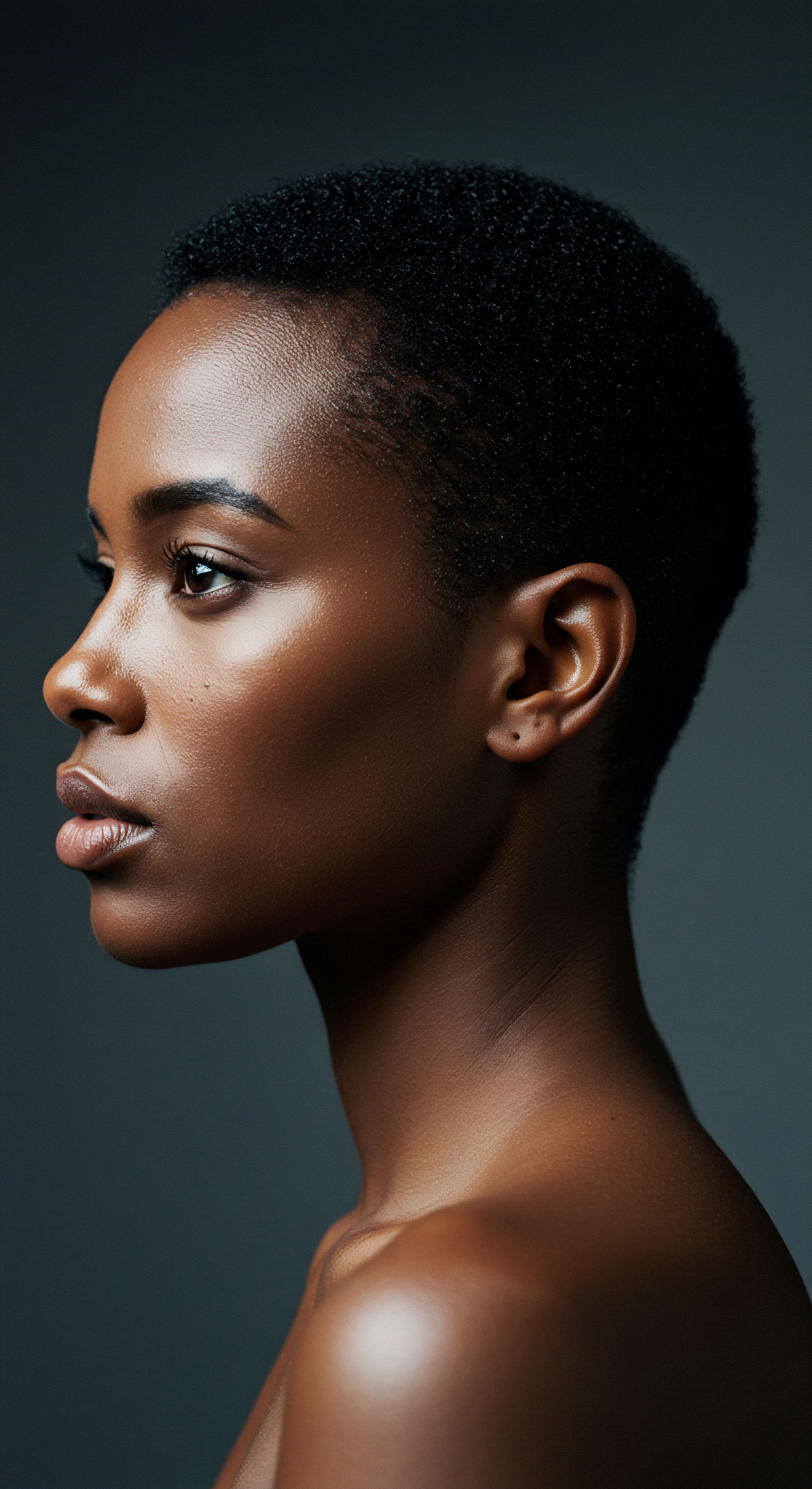
Controversial Data Points and Nuanced Considerations for Textured Hair
The discourse surrounding protein benefits for textured hair is not without its controversial corners, inviting a deeper, more critical examination. A prevailing, yet often unsubstantiated, notion within some textured hair communities suggests that Afro-textured hair naturally possesses “too much protein,” or that protein treatments are universally detrimental. This perspective can lead to an avoidance of protein, potentially exacerbating issues of breakage and weakness.
The idea that Afro-textured hair inherently has “too much protein” often overlooks the crucial distinction between intrinsic protein composition and the effects of external damage.
However, a closer look at the scientific literature offers a more nuanced view. While African hair exhibits a higher density of disulfide bonds, which contribute to its curl pattern, studies on the overall amino acid composition of hair proteins (keratins) across different ethnic groups show a remarkable uniformity. This suggests that the apparent fragility of African hair is not due to an inherent weakness in its protein makeup or an “excess” of protein, but rather to its unique morphology and the increased susceptibility to mechanical damage during grooming. A study by Khumalo et al.
(2005) specifically investigated the distribution of cystine-rich proteins in Black African hair compared to Caucasian and Asian hair and found no abnormality in their distribution, concluding that observed structural damage was consistent with physical trauma from grooming, rather than an inherent structural abnormality. This finding challenges the simplistic “too much protein” narrative and emphasizes the need for gentler handling and targeted protein support to counteract damage from styling and environmental factors.
Furthermore, the efficacy of protein treatments on virgin (unrelaxed) Afro-textured hair is an area requiring more dedicated research. While studies consistently show the benefits of hydrolyzed proteins for damaged hair, particularly chemically treated or bleached strands, there is a recognized research gap concerning their direct effect on healthy, unprocessed Afro, curly, or wavy hair. This suggests that while protein is undeniably crucial for structural repair, its application to already healthy, robust textured hair might yield minimal additional benefit and, if overused without proper moisture balance, could indeed lead to temporary stiffness.
| Aspect Protein Composition |
| General Hair Science Hair is primarily keratin, a protein with disulfide bonds determining shape. |
| Specific to Textured Hair (Advanced View) African hair has a higher density of disulfide bonds, contributing to tight curls but also making it more prone to breakage at points of curvature due to mechanical stress. Overall amino acid composition of keratins is largely uniform across ethnic groups, suggesting fragility is often due to grooming practices, not inherent protein weakness. |
| Aspect Protein Treatment Mechanism |
| General Hair Science Hydrolyzed proteins penetrate hair shaft to fill gaps, strengthening structure. |
| Specific to Textured Hair (Advanced View) Lower molecular weight hydrolyzed proteins can penetrate the cortex, while higher molecular weight proteins primarily coat the cuticle, both contributing to reinforcement. This is particularly valuable for textured hair prone to cuticle lifting and mechanical damage. |
| Aspect Protein Overload |
| General Hair Science Excess protein without moisture can lead to stiffness and brittleness. |
| Specific to Textured Hair (Advanced View) Misinterpretation of "protein overload" often stems from a lack of moisture balance, rather than an inherent excess of protein in textured hair. Over-application can temporarily stiffen strands, but this is reversible with moisture. |
| Aspect Research Gaps |
| General Hair Science Extensive research on damaged hair. |
| Specific to Textured Hair (Advanced View) Limited direct studies on the effects of protein treatments on healthy, unprocessed Afro-textured hair, highlighting a need for more culturally relevant scientific inquiry. |
| Aspect The advanced understanding of protein benefits for textured hair calls for a precise, research-backed approach, moving beyond generalizations to address specific structural and historical considerations. |
This sophisticated lens encourages a discerning approach, advocating for protein use when genuine structural compromise is evident, rather than as a default for all textured hair. It champions a hair care philosophy grounded in scientific literacy, combined with an appreciation for the unique characteristics and historical narratives of Black and mixed-race hair. The long-term consequence of this refined understanding is the cultivation of hair care practices that truly support the inherent strength and beauty of textured hair, fostering resilience and promoting optimal health without succumbing to generalized or misinformed advice.

Reflection
As we gently draw our exploration of Protein Hair Benefits to a close, a deeper appreciation for the nuanced conversation surrounding textured hair emerges. It is a dialogue that transcends mere chemistry, touching upon the rich tapestry of heritage, the quiet strength of resilience, and the enduring quest for holistic well-being. Our strands, particularly those that curl and coil with such magnificent individuality, carry not only biological information but also stories of generations, whispers of adaptation, and the vibrant echoes of cultural identity.
The journey through protein’s role in hair health, from its fundamental building blocks to its complex interactions within the unique architecture of textured hair, reveals a profound truth ❉ genuine care is born from understanding. It is about recognizing the delicate balance required to nurture these precious strands, acknowledging that what works for one hair type may not perfectly serve another, and that generalizations often fall short of true insight. The “warm, fuzzy, delicate pastel lady” of Roothea encourages us to approach our hair with both scientific curiosity and tender empathy, seeing beyond surface concerns to the profound connection between our hair and our sense of self.
Ultimately, the conversation around protein and textured hair is an invitation to embrace an informed intuition. It asks us to observe, to learn, and to respond with deliberate kindness to the signals our hair sends. This mindful engagement allows us to cultivate practices that not only strengthen our hair physically but also honor its cultural legacy and inherent beauty, allowing each curl and coil to flourish in its most authentic, vibrant expression.

References
- Robbins, C. R. (2012). Chemical and Physical Behavior of Human Hair. Springer Science & Business Media.
- Dawber, R. P. R. & Van Neste, D. (2004). Hair and Scalp Disorders ❉ Common Problems and Their Management. Informa Healthcare.
- Garg, S. & Singh, R. (2012). Hair ❉ Its Structure, Properties, and Factors Affecting Hair Health. In Cosmetic Science and Technology ❉ A Handbook of Hair Care Products. CRC Press.
- Davis-Sivasothy, A. (2011). The Science of Black Hair ❉ A Comprehensive Guide to Textured Hair Care. Saja Publishing Company.
- Sakamoto, K. & Mamoru, H. (2007). Hair and Hair Care. CRC Press.
- Franbourg, A. Hallegot, P. Baltenneck, F. Freyssinet, J. M. & Bouillon, C. (2003). Current research on ethnic hair. Journal of the American Academy of Dermatology, 48(6), S115-S119.
- Feughelman, M. (1997). Mechanical Properties of Keratin Fibres. Elsevier.
- Khumalo, N. P. Stone, J. & Gathers, R. (2005). Apparent fragility of African hair is unrelated to the cystine-rich protein distribution ❉ a cytochemical electron microscopic study. Experimental Dermatology, 14(4), 311-314.
- Porter, C. E. & Price, V. H. (2004). Hair shaft abnormalities. Dermatologic Clinics, 22(1), 1-18.
- Kowalski, K. (2024). Science works to demystify hair and help it behave. Science News Explores.
- Cruz, C. F. & Van Neste, D. (2019). The what, why and how of curly hair ❉ a review. International Journal of Cosmetic Science, 41(6), 513-520.
- Gamez-Garcia, M. (1993). Hair strengthening by hydrolyzed wheat proteins and wheat oligosaccharides. Journal of Cosmetic Science, 44(5), 273-280.
- Ruse, C. (2017). Changing the shape of hair with keratin peptides. RSC Advances, 7(82), 52206-52213.
- Chhabra, P. (2023). The Long and Short of Protein Hair Treatments. The Voice Of Fashion.
- Gaines, M. (2024). Science works to demystify hair and help it behave. Science News Explores.